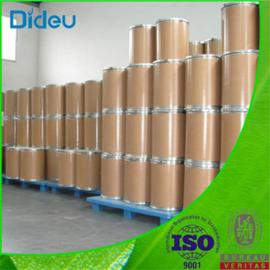-
Categories
-
Pharmaceutical Intermediates
-
Active Pharmaceutical Ingredients
-
Food Additives
- Industrial Coatings
- Agrochemicals
- Dyes and Pigments
- Surfactant
- Flavors and Fragrances
- Chemical Reagents
- Catalyst and Auxiliary
- Natural Products
- Inorganic Chemistry
-
Organic Chemistry
-
Biochemical Engineering
- Analytical Chemistry
- Cosmetic Ingredient
-
Pharmaceutical Intermediates
Promotion
ECHEMI Mall
Wholesale
Weekly Price
Exhibition
News
-
Trade Service
Case data
The patient, a 77-year-old male, with chronic obstructive pulmonary disease and type 2 diabetes, underwent colectomy for colorectal cancer 6 weeks before admission, and was admitted to hospital with persistent fever and cough for 1 month, and repeated examinations showed no obvious microbial infection
.
Chest x-ray shows consolidation of the right upper lobe on admission, and treatment with broad-spectrum antibiotics is initiated
.
However, on the fifth day of hospitalization, the patient's condition deteriorated, and chest radiographs showed local consolidation of the upper lobe of the right lung to form a cavity and gradually involve multiple lobes
.
Bronchoscopy shows thick mucus plugs in the airways, deep ulcerative plaques with pseudomembrane formation, and a "melted cheese" appearance (Figure 1a).
Pseudomembrane formation
is seen not only in the right upper lobe bronchi, but also in other multilobar bronchi that are not shaded in the lung field.
Combined with patient characteristics and clinical course, severe Aspergillus tracheobronchitis (ATB)
is suspected.
Aspergillus fumigatus was isolated from a biopsy specimen (Figure 1b) and confirmed ATB
.
The patient's condition improved
with antifungal therapy.
Fig.
1 Bronchoscopic images and histopathological results
Analyze the discussion
Invasive aspergillosis is a potentially fatal infection that can affect multiple organ systems, commonly seen in patients with
immunosuppressed and severe respiratory viral infections such as novel coronavirus infection and influenza.
ATB is aspergillosis that occurs in the tracheobronchial wall, and is a rare type of aspergillosis, and the most common pathogenic fungus is Aspergillus fumigatus
in this case.
It is most common in lung transplant recipients, but has also been described in other types of hosts, including chronic obstructive pulmonary disease, diabetes, malignancy, and postoperative malnutrition, such as in this case
.
The clinical manifestations and imaging of ATB are non-specific, and the most common symptoms are cough, phlegm, fever, wheezing, and hemoptysis
.
As a result, ATB is prone to misdiagnosis or delayed diagnosis, and some cases are treated as asthma and tuberculosis
.
However, observation of bronchoscopic images to assess changes in the airway, combined with the history and patient characteristics, can aid in early diagnosis
.
The literature reports that the airway mucosal bronchoscopic changes of ATB are obstructive, ulcerative and pseudomembrane necrosis, which can coexist, and pseudomembrane necrosis is more common
.
ATB is mainly confirmed by tissue biopsy pathology, which suggests that Aspergillus infiltrates into the tracheal and bronchial mucosal base layers, so transbronchoscopy bronchial mucosal biopsy is the main method of
diagnosis.
Treatment of ATB includes antiaspergillus therapy, bronchoscopic intervention, and immunoenhancement therapy
.
References:
1.
Clara So, Shinyu Izumi, Yusaku Kusaba, Melting cheese-like appearance in the bronchi: Aspergillus tracheobronchitis, QJM: An International Journal of Medicine, Volume 115, Issue 3, March 2022, Pages 173–174.
2.
ZHAO Weiye,LIU Jing,LIU Xuedong.
Clinical analysis of aspergillus tracheobronchitis: 4 cases[J].
Chinese Journal of Infection and Chemotherapy,2017,17(1):19-23.
DOI:10.
16718/j.
1009-7708.
2017.
01.
003.
3.
CAI Zhiming,LI Baochun,HUANG Songping,LIN Yichuan,LIU Darui.
Two cases of non-immunodeficiency aspergillus tracheobronchitis and literature review[J].
Clinical Metaptic,2019,34(06):553-558.
)







